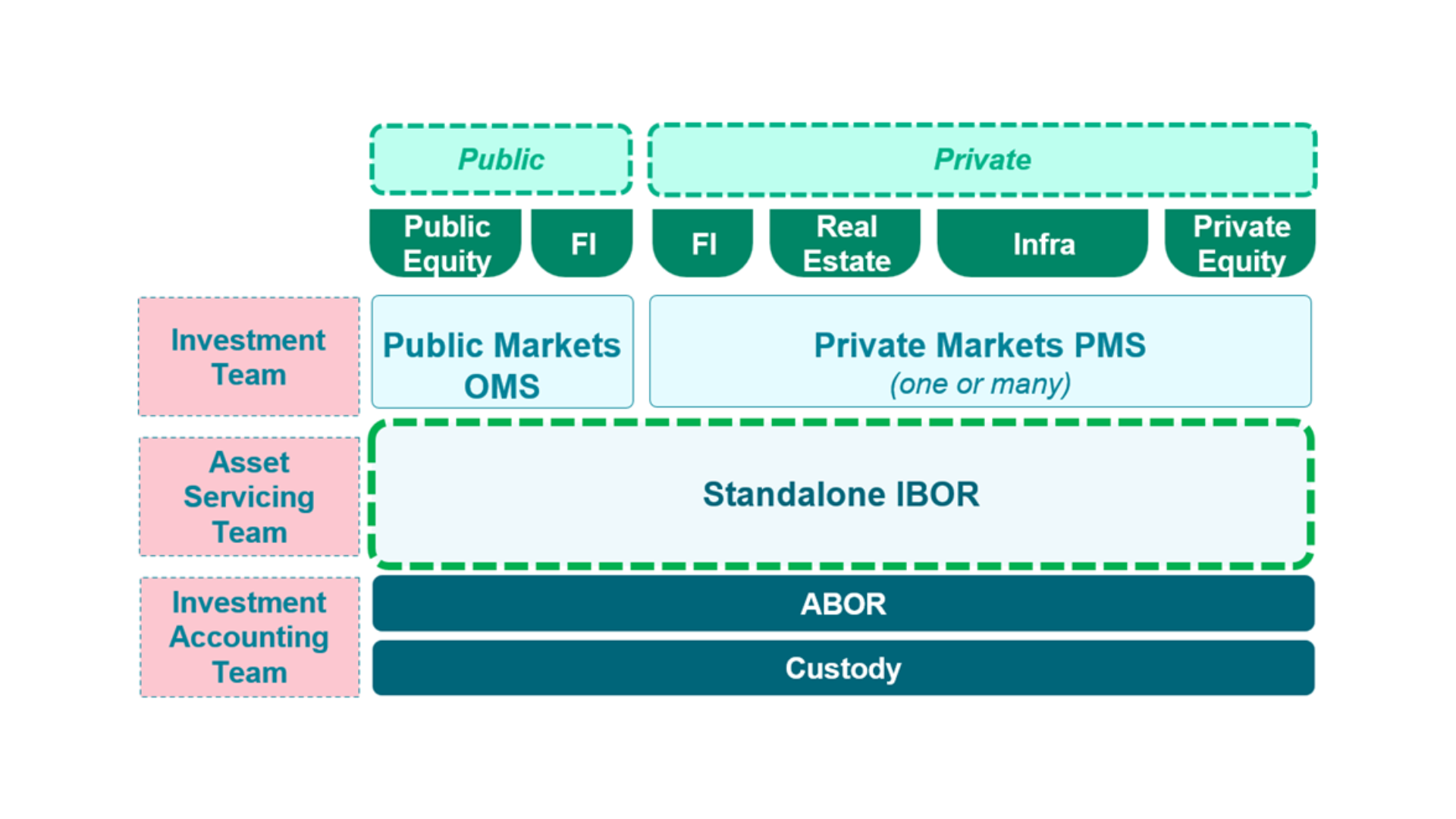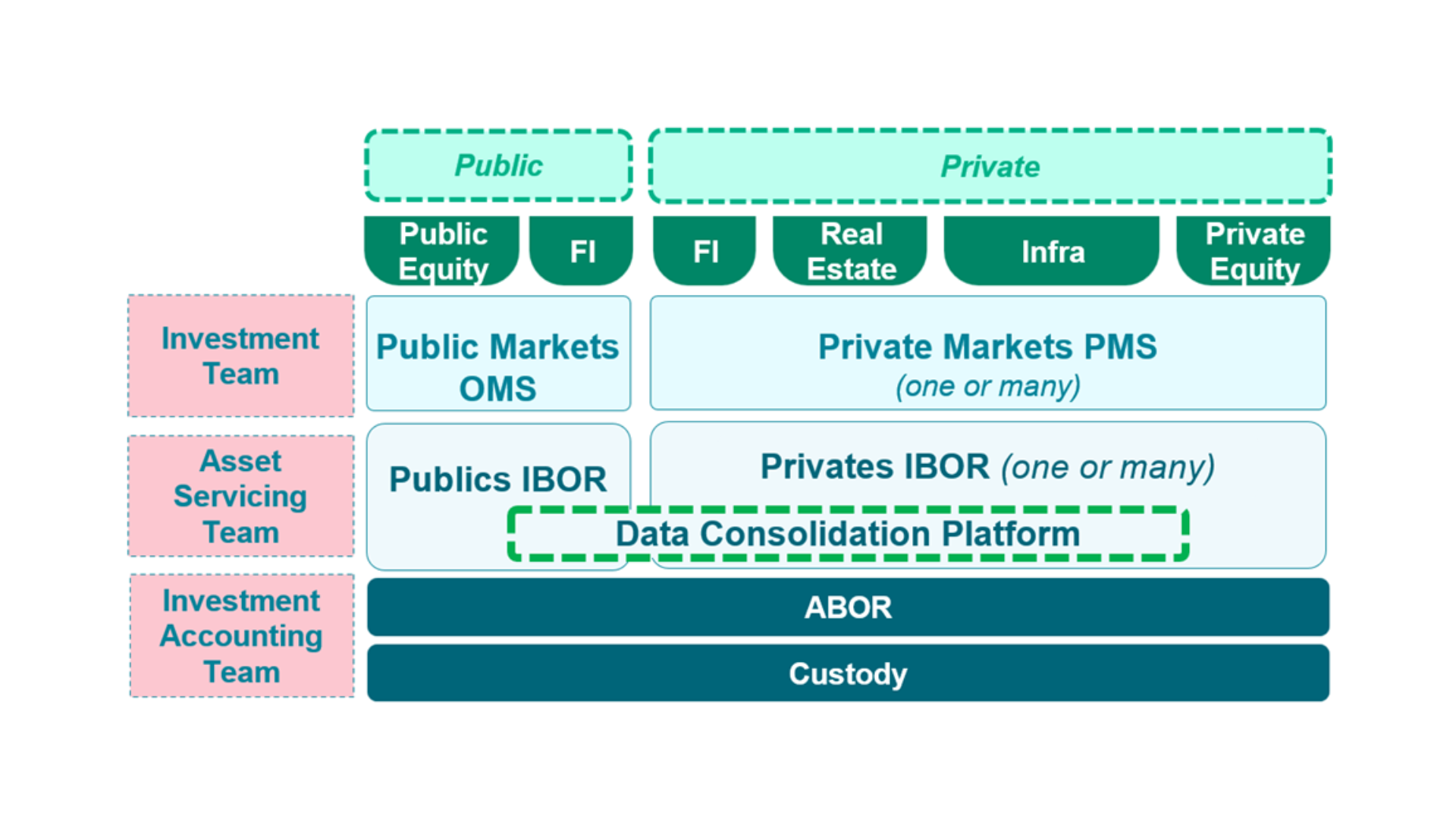Total Portfolio – Operating Model Archetypes
November 13, 2025
This is part 4 of a 4-part Total Portfolio article series.
Author: Monesh Jeeva, Consultant at Alpha FMC
Varying Paths to Enabling TPV
We have discussed the concept of Total Portfolio View (TPV), what operational and process challenges exist, as well as how a unified data strategy is core to bringing Total Portfolio to life. Now, we will discuss the pathways to success through varying operating model archetypes.
Which TPV Model Best Fits Your Organization?
The first step in choosing a TPV operating model is to clearly define the unique use cases your organization has for TPV. Are your total fund objectives focused on supporting real-time, timely investment decisions, or are your total fund needs centered around post-execution risk modeling and performance measurement? This difference plays a key role in deciding whether a Real-Time Total Fund IBOR or a T+1 Data Warehousing model is best suited for your needs.
Real-Time Total Fund IBOR Example:

T+1 Data Warehousing Example:

TPV Model Characteristics
Choosing the right TPV operating model means carefully weighing the distinctive features of the two key archetypes to see how well they fit with your firm’s priorities.
Model Archetype |
Real-Time Total Fund IBOR |
T+1 Data Warehousing |
Operating Model Description |
May include a best of breed OMS and (typically multiple) PMS solutions for Public and Privates markets that feed one central consolidated IBOR, or a front-to-middle platform that includes OMS, PMS, and IBOR in one system. | Typically, a Public Markets OMS / IBOR and separate Private Markets PMS / IBOR that both feed a downstream central data warehouse. |
Timeliness |
Real-time activity and confirmation | T+1 settled positions and holdings |
Data Granularity |
Position, account, tax lot level | Aggregated holdings, asset, and sub-asset class level |
What types of funds typically pursue this model? |
|
|
Constraints |
|
|
Sample Use Cases |
Intraday Portfolio Monitoring
Liquidity and Cash Management
|
Performance Measurement and Attribution
Risk Reporting and Oversight
Fund Accounting and Reconciliation
|
With this foundation in place, the focus now shifts to the design considerations that will influence how effectively your chosen TPV model can be implemented and sustained. These considerations span fund size and complexity, investment strategies, technology readiness, data governance, and the crucial element of organizational change management. Addressing these factors is essential for tailoring the TPV operating model to your firm’s unique context and ensuring smooth adoption across teams.
Design Considerations
Our clients span a broad spectrum of size, sophistication, and operational complexity, each with distinct TPV requirements for data timeliness and granularity. As investment capabilities evolve from allocators to active tactical managers, the definition of what constitutes timely, firm-wide exposure information also changes. Whether a client needs real-time exposures through a unified IBOR, relies on T+1 data warehousing for robust reporting and oversight, or elects a hybrid model to support a maturing investment philosophy, our integrated Charles River Development software and State Street services solutions can provide fit-for-purpose unification of public and private asset data.
- David Eshenower, EVP, Head of State Street Alpha ®
A) Scale Requirements Based on Fund Size and Complexity
Firms should consider their portfolio’s size and complexity when choosing a TPV model to ensure scalability and alignment with operational demands:
- Firms should consider real-time IBOR if they manage large, complex portfolios that require scalable and responsive systems to handle significant data volumes with minimal delay
- If a fund is smaller or less complex, a T+1 data warehouse may be a simpler and more cost-effective option for delivering consolidated portfolio insights with timely reporting
- Firms might adopt a phased or hybrid approach, starting with T+1 data warehousing across the portfolio and gradually layering in real-time IBOR capabilities for select strategies
- Expect that your TPV operating model may evolve over time, transitioning from batch-oriented solutions toward real-time architectures as your technology stack and data governance
B) Investment Style and Asset Class-Specific Demands
Different investment strategies dictate different data and timeliness needs:
- Firms should consider real-time data solutions if their portfolios include active trading strategies or complex instruments such as derivatives that require timely, granular visibility for decision-making
- If the portfolio primarily consists of long-term holdings or passive investments, next-day T+1 data updates may be sufficient to meet reporting and oversight needs
- Firms managing alternatives like private equity or real estate should recognize the unique data challenges these asset classes present, often requiring strong governance structures and manual oversight to ensure data quality
- If comprehensive exposure insights are a priority, firms need unified data across asset classes and functions
- Collaboration between investment teams, data management, and external managers is crucial, especially if consistent data mapping and reconciliation across diverse sources are needed
- Firms should consider these complexities carefully, as effectively managing alternative assets is key to achieving a truly consolidated and accurate TPV
C) Technology Maturity & Readiness
Firms should assess their technology infrastructure’s ability to integrate diverse external data feeds and manage complex data workflows when selecting or evolving their TPV operating model:
- Firms should consider investing in advanced, real-time TPV models if their technology infrastructure is mature enough to support the complex integration of multiple data feeds from various external managers with differing formats and update frequencies
- If your current ecosystem has limitations in handling diverse data types or lacks flexible ETL processes, a more batch-oriented T+1 data warehouse may be more suitable
- Consider upgrading technology and processes progressively, aligning ecosystem readiness with your TPV ambitions and operational goals
D) Importance of Data Normalization
Firms should ensure robust data normalization to achieve accurate exposure management across both individual securities and underlying assets:
- If your portfolio includes both public and private market holdings, firms should implement processes to accurately align publicly traded securities with their corresponding private assets to prevent double counting and ensure data integrity
E) Effective Change Management
Firms should integrate structured change management to foster collaboration and ensure smooth adoption of new TPV processes and technologies:
- Prioritize change management as your TPV implementation requires coordination across investment, risk, operations, and data management teams to break down silos and build shared accountability
- If the new TPV model involves redefining roles, such as introducing data stewardship or shifting decision-making responsibilities, firms should proactively manage these changes
- Leadership sponsorship and clearly defined accountability across data, investment, and technology teams are critical to sustaining adoption and preventing a reversion to siloed practices
- Firms should establish ongoing communication channels and feedback loops to track adoption progress, identify issues early, and iteratively improve the operating model based on user experience
Conclusion
Choosing the right TPV operating model archetype, whether Real-Time IBOR or T+1 Data Warehouse, is a strategic decision that fundamentally influences the firm’s ability to handle data complexity and deliver timely, actionable insights.
Real-Time IBOR offers detailed, immediate visibility, empowering active portfolio management, but comes with higher operational complexity and significant technology investment. T+1 Data Warehouse provides a well-established, consolidated view suited for performance measurement and regulatory reporting, albeit with less support for intra-day decision-making.
Many firms find success through a hybrid, phased evolution of operating model archetypes; starting with T+1 data warehousing and progressively layering in real-time capabilities as their data governance matures and technology infrastructure strengthens. Recognizing this natural progression can help firms design more flexible and scalable TPV strategies.
Ultimately, success depends on a comprehensive strategic roadmap that aligns technology investment, data governance, and operating model transformation. This roadmap should clearly define roles and responsibilities, establish robust data management frameworks, and foster a culture open to change.
By integrating people, processes, technology, and data thoughtfully, firms can unlock the full potential of TPV and support sustainable, long-term success remaining adaptable to evolving investment strategies and operational demands.
Successfully implementing a TPV is as much a cultural journey as it is a technological one. Our experience supporting clients globally shows that overcoming complexity requires not only scalable platforms and robust data governance, but also proactive change management and a clear strategy for aligning people, processes, and platforms. Talent and capacity gaps are common for firms during this transformation. Leveraging strategic partners with an established platform, global operating model and genuine expertise can enable firms to reach their TPV goals quicker and with less disruption to the business.
- David Eshenower, EVP, Head of State Street Alpha ®
To read the full article series, visit part 1 – Understanding the Total Portfolio Approach, part 2 – Overcoming Total Portfolio’s Challenges, part 3 – Unlocking the Power of Total Portfolio – Unified Data for Asset Managers.
* Contact Us
"*" indicates required fields